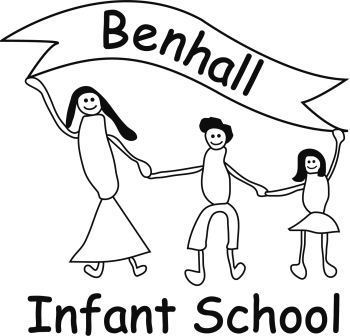Music at Benhall
At Benhall Infant School, we provide every child with high quality music experiences which engages and inspires them. Through listening, composing and performing all children will have fun, develop self-confidence and use music as a tool for learning.
Key features of effective art teaching
We understand that children need the opportunity to hear and discuss music as well as play instruments and sing. Our music curriculum combines listening to, composing, performance and the history of music.
The key principles of effective music teaching are:
- It’s fun
- Develops self-confidence
- Provides insights into music from other periods and cultures
- Contributes to the aesthetic life of the school
- Allows children to express themselves and develop their creativity
- Develops some understanding of the core elements of music and some of the skills required to make music alone and with others.
- Uses music as a tool for their learning
How we teach Music
- At Pre-School, children listen to familiar songs and instruments. They use their bodies and their environments to make their own sounds. Children are encouraged to talk about the music they hear and share their likes and dislikes.
- At school in weekly singing assemblies where the children develop the ability to sing in tune, perform with expression and learn to harmonise with others.
- From reception to year 2 the children are taught to make music together with tuned and untuned instruments. The children are taught to compose their own music. They are also taught to sing and play in time – controlling the tempo.
- In reception and year 1 composing or performing using body percussion and vocal sounds is taught to develop their understanding of musical elements without the added complexity of an instrument.
- In year 2 children learn how to play an instrument, either recorders or the ukulele. In doing so they understand the different principles of creating notes, as well as how to read basic music notation.
- Music is cross curricular as well as the discreet lessons taught from the KAPOW syllabus.
- We adopt a music genre each week and children are exposed to music from this genre as they enter assemblies, eat their lunch, enter their classrooms etc. This provides a useful opportunity to compare the genres they hear and discuss their own preferences.
The child’s progression as a musician:
At Pre-school, I am a mini musician who is discovering an inner confidence in my ability to entertain others through my performance. I enjoy learning new songs and will sing them again and again to make you smile. I notice music in the world around me and respond emotionally to it. I can tell you what I like and don’t like about performances I see.
I am able to:
- Creatively move my body expressively to music
- Make up my own rhythm
- Sing a collection of songs and rhymes
In reception, I am an early musician who is confident and enthusiastic to respond to the enriched environments around me. I express my thoughts, feelings and ideas through my own performances either on my own or in collaboration with my peers. I respond to encouragement from my peers, teachers and parents and will risk stepping onto the role of a performer in front of a familiar audience.
I am able to:
- Initiate new combinations of sounds to express and respond to feelings, ideas and experiences
- Play co-operatively as part of a group to perform
- Join in with songs and musical games
- Create simple representations of events, people and objects through music or song
In KS1, I am a musician who responds to the design brief to generate and create purposeful and appealing products. I am inspired by what I see, hear and experience to take risks in my designs to create products that show my unique interpretation of the design brief.
I am able to:
- Use my voice expressively and creatively by singing songs or speaking chants and rhymes
- Play tuned and untuned instruments musically
- Listen with concentration and understanding to a range of high quality live and recorded music
- Experiment with, create, select and combine sounds using the interrelated dimensions of music
- Choose sounds and instruments carefully and make improvements to my own and others words
